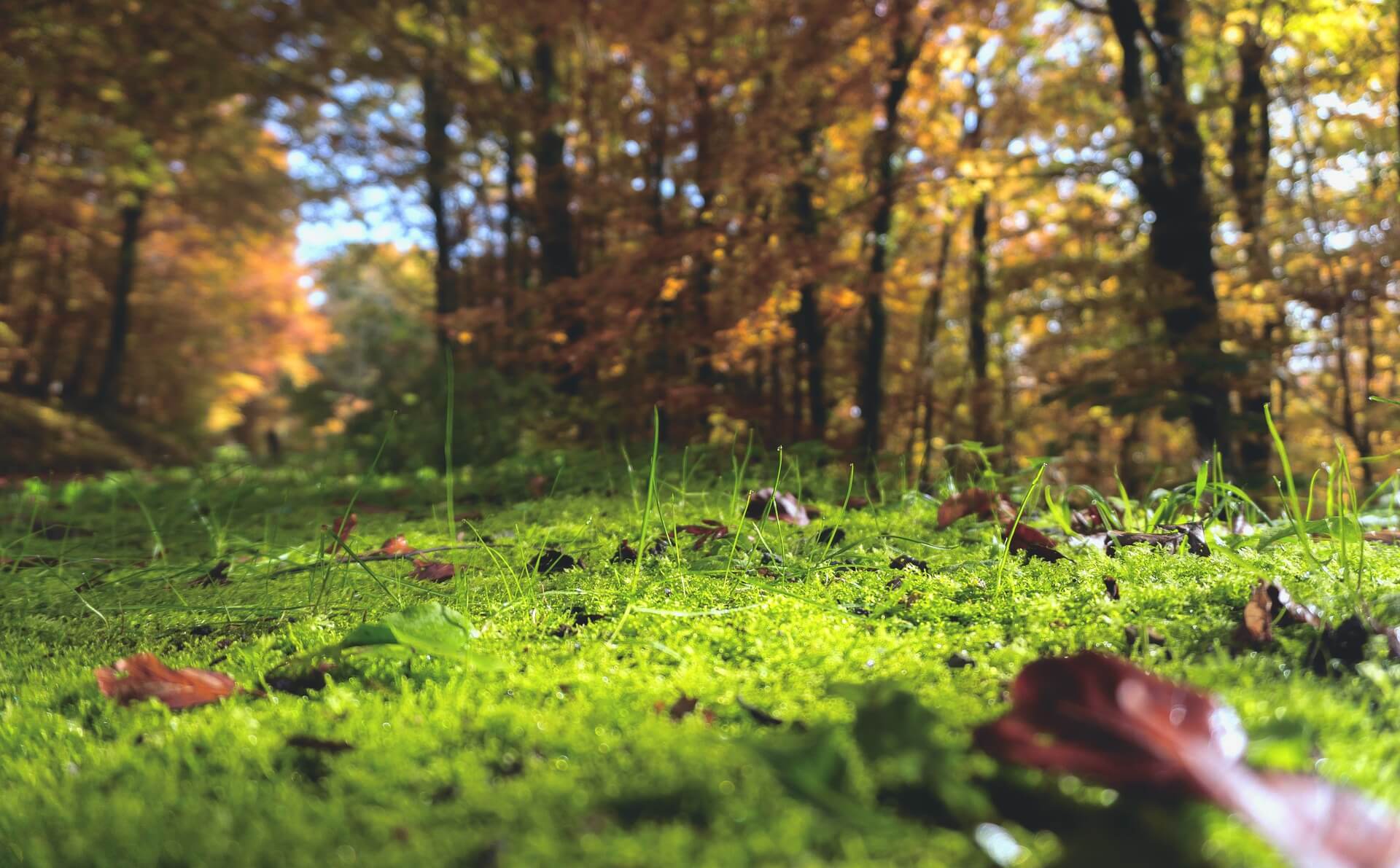Japanese gardens are designed to reflect the distinct beauty and passing of the four seasons. Autumn brings a light relief from the heat where sunny and less humid days takeover, giving way to cooler nights. A magical time of change when stunning and vibrant Japanese Maples glow a fiery red amongst lush moss and ferns.
By contrast, the cold and snow of winter is a time for evergreens to take centre stage. A winter garden is known for its myriad of greens, and there is a sense of peace and tranquillity as plants rest and trees reveal their intricate forms – the perfect place to escape from the distractions of our busy lives.
So if you’re looking for a little autumnal inspiration for your Japanese garden, here are some of the best Japanese plants for the cooler months.

Sango Kaku – Japanese Maple
Breathtaking in the autumn, the Japanese Maple (also known as Acer Palmatum) is widely used in Japanese gardens, and is famous for its striking red leaves and beautiful foliage. Cultivated in Japan for over 300 years, this deciduous tree is a slow growing plant that typically lives for over 100 years.
The species thrives in acidic and loam-based compost that contains high levels of organic matter. The Japanese Maple however won’t tolerate wet, dry or alkaline conditions, and their lacy, finely cut leaves require partial shade in the summer to avoid any damage from the sun.
Kuromatsu – Japanese Black Pine
The Japanese Black Pine represents longevity, and is mostly found in the coastal areas of its native Japan. The tree can reach up to 30 feet in its natural surroundings, and can tolerate temperatures as low as minus 25 degrees.
One of the most classic bonsai trees, it is tough and hardy, typically growing in stony soil where it survives harsh coastal winds. The tree is irregularly shaped and dark grey-green in colour, its needles are in fascicles of two, with a white sheath at the base. Resistant to salt and pollution, it’s commonly used in a variety of Japanese gardens, but above all it is a beautiful ornamental tree.
Ume – Japanese Apricot
The Japanese Apricot is a deciduous tree that can be found in sparse forests, by streams and in the mountains. It is most commonly planted in the north east of Japanese as the fruit is thought to be a protective charm against evil, the direction from where evil is supposed to come. Flowering in late winter around January or February, its blooms are snow-white or blood red, representing the floral symbol of January.

Moss
Lush, green, velvety moss has been a central element of Japanese gardens for centuries, and is stunning in the autumn when it contrasts with maple trees. It can cover large areas of the garden, growing on stone lanterns, trees and garden stones. Its overall aesthetic portrays an ancient ambience, providing an ethereal sense of rugged beauty.
Thriving in humid, wet environments, Japan has one of the richest environments for moss, and with the ability to hold up to 20-30 times of its own weight in water, it can thrive in nutrient-poor soil where flowering plants have a harder time to survive.

Bamboo
Bamboo is an evergreen that’s integral to almost every type of Japanese garden. It has a variety of uses, including the formation of hedges, fences and is frequently used to help create shade. Found near rivers and in the mountains, bamboo is also used in strolling and tea gardens, where the sound of the wind rustling through their leaves adds to the tranquillity of any Japanese garden.
While there exists a variety of different types of bamboo, these can are broadly categorised as either clumping or running bamboo. Typically clumping bamboo is found in either tropical or sub-tropical regions, and although there are a few varieties that can deal with colder temperatures, not all of them will be suited to the temperate climate of the UK.
By contrast, running bamboo usually originates in colder climates, with many varieties staying green and leafy down to about zero degrees, with a few coping well in conditions of up to minus 15 degrees.

Fern
What Japanese garden would be complete without a fern? They’re one of the most ancient plants, with their thick, green foliage offering an eye-catching accompaniment to a variety of trees and shrubs.
Throughout Japan there are hundreds of native species and many of those have been successfully cultivated in European and American gardens. They grow best in shady and moist environments, thriving out of the sun where their large luscious leaves have evolved to help them cope with life in the shade. Ferns also group well together, and beautifully complement plants like the stunning and vibrant Japanese Maple.
Enkianthus shrubs
Often found colonising mountain slopes in Japan, the E. Campanulatus is the hardiest of the Enkianthus species, boasting spectacularly bright green foliage that turns into vibrant colours of red, yellow and orange during the autumn.
This hardy, deciduous shrub can survive harsh winters, before producing clusters of pretty bell-shaped spring flowers that are cream in colour with striking pink veins. The plant thrives in acidic, well-drained soil and can survive temperatures as low as -20 degrees.
Autumn is one of the most beautiful times to visit a Japanese garden as the Japanese Maple shows off its red and golden hues in the autumnal sunshine, with the simplistic beauty of evergreens during the winter often providing a noticeable contrast against the falling snow. By emphasising and focussing on plants that thrive throughout the four seasons, you can ensure your Japanese garden remains a place of beauty, serenity and calm all year round.
–
This post was written by James Stedman of Japeto, a family owned business who offer an extensive selection of handpicked, high quality Japanese gardening tools, developed for professional and amateur gardeners.